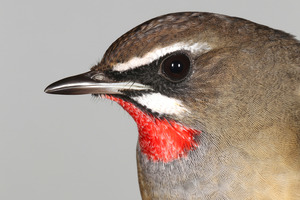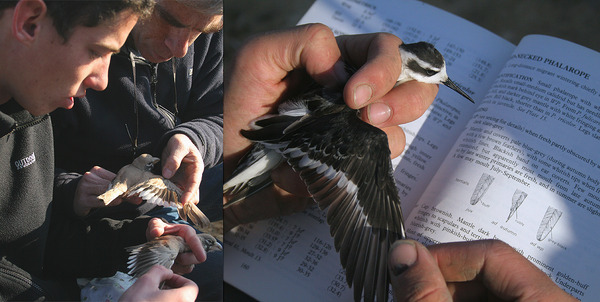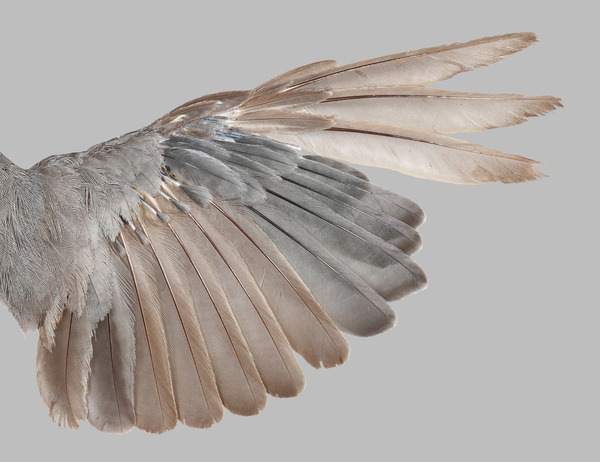 LINKED PAPER
LINKED PAPER
Moult terminology: let’s make it simpler! Kiat, Y. 2022 Ibis. doi: 10.1111/ibi.13164 VIEW
An understanding of feather moult, an important process in the life cycle of birds, lags behind that of other avian life-history events. This lag includes lacks of scientific attention, but surprisingly also lack of basic knowledge regarding the moult strategy of many bird species. This situation is particularly astonishing in light of the fact that feathers are a unique characteristic of birds.
There are two main terminology systems for describing moult. The first is life-cycle-based in which the moult is described in reference to the events in the annual cycle: post-juvenile moult, post-breeding, and pre-breeding moult. Life-cycle-based terminology is commonly used in the Old World, and is considered relatively simple to understand (e.g., terms like post-juvenile and pre-breeding are self-explanatory). The second terminology system is plumage-based, which is often referred as H-P terminology (Humphrey & Parkes 1959). With this terminology, moult is referred to by the developmental stage of the plumage. H-P terminology is commonly used in the New World. Many authors, especially those who use this terminology, believe it better reflects the evolution of moults throughout ancestral lineages using homology between moults and plumages (Howell et al. 2003). However, there is no consensus about our ability to identify these homologies (Stresemann 1963, Jenni & Winkler 2004, Jenni & Winkler 2020).

Figure 1 Simple and understandable moult terminology is essential for a correct understanding of moult strategy and often affects the ability to correctly identify a bird’s age during ringing and monitoring activity.
In order to test the use and understanding of the two terminologies described above, a survey was conducted using social media (Facebook and Twitter). The first two parts of the survey included questions for the general characterization of the respondents (e.g., geographical area of activity). In the third part, there were two questions that examined how the respondent perceives their own understanding of each of the moult terminologies respectively. The final part included four questions that examined the respondents’ degree of understanding of each of the terminologies (two questions for each of the terminologies). The percentage of respondents that answered ‘correctly’ is calculated as an average for the two questions.
The results of the survey showed that life-cycle-based terminology is understandable to more respondents (93.4% answered correctly) than plumage-based terminology (37.9% answered correctly; n = 434 respondents). While most of the surveyed factors did not affect the degree of understanding of the moult terminologies, as expected, the main difference was due to the geographical activity area of the respondent, especially regarding the plumage-based terminology (H-P). The results of the survey indicated only a small difference in the understanding of the life-cycle-based terminology between respondents whose main activity is in the Old World (94.6%) and those whose main activity is in the New World (91.0%). In contrast, the results indicated differences in understanding of the plumage-based terminology are area dependent. Respondents whose main activity was in the New World answered correctly at a higher rate (74.8%), compared with respondents whose main activity was in the Old World (19.4%). Importantly, while respondents who thought they understood the life-cycle-based terminology were indeed able to answer correctly at a high rate (94.1%), respondents who thought they understood the plumage-based terminology showed less success in understanding when they had to choose the correct answer (59.7%). In conclusion, the life-cycle-based terminology is simpler and more intuitive and therefore understandable to almost everyone. The plumage-based terminology is understood by more people whose main activity is in the Americas, but also in this part of the world, the life-cycle-based terminology is understood by more people. In addition, a problematic gap was found between people’s perceptions of themselves regarding the plumage-based terminology and their ability to truly understand it.

Figure 2 Understanding of the two moult terminologies, the H–P (plumage-based) terminology and the life-cycle-based terminology, by birdwatchers, bird-ringers and the ornithologist community (numbers at the bottom of columns represent the sample sizes).
Over the last few decades, the two moult terminologies have largely become separate languages, each spoken in a different part of the world (the New versus Old Worlds). And, like different languages, different terminologies have advantages and disadvantages. But, as with languages, it is often challenging to convince people that in certain situations, the language they speak is confusing or exclusionary and that a different language should be used, likely because it is not easy to speak a foreign language and habits are hard to change.
I first suggest that ornithologists studying moult be flexible and use the simplest terminology that is necessary to convey their research. It is important to recall that the use of plumage-based terminology may distance an audience from the Old World, as they do not speak this language, and many not understand it. The target audience should be carefully considered and terminology adjusted accordingly. If the plumage-based terminology is still considered the most appropriate to describe a complex moult cycle, effort should be made to explain it, to ensure all readers can understand. The results of the survey presented herein clearly indicate a significant gap in the understanding of this terminology, even among those who believe they understand it.

Figure 3 A moult-related gap in the wing flight surface of a second-year White-throated Robin (Irania gutturalis), 23 June (Mt. Hermon, Israel). The only way to renew an abraded old feather is to replace it with a new fresh feather, which causes a gap in the plumage. This gap is one of the factors derived from the moulting process and makes it relevant to other aspects of the avian life cycle, for example, flight ability and movement patterns.
Terminology is a group of specialized terms, and respective meanings, which are designed to create a uniform language and thus simplify the description of complex cases. Ornithologists have developed two terminologies that are often associated with geographical regions. The first (life-cycle-based) is more simple and may not cover complex cases, and the second (plumage-based) is neither intuitive nor understandable for most potential users. In the information age, where knowledge is shared easily and quickly without geographical limitations, making information available and clear to all potential users is an important goal. Using incomprehensible terminology will continue to prevent many bird-watchers, bird-ringers and ornithologists from understanding moult, and deter amateurs in particular. This result is particularly problematic in an area where the activity at many ringing stations and bird-observatories is volunteer and amateur based. Ornithologists should strive to make the moult a spoken language even among these audiences. Some will constitute the future generation of ornithologists and nature conservationists; others will collectively be involved in ringing millions of birds every year. The information coming from their activities may improve our understanding of the evolutionary and ecological aspects of moult strategies, especially in the dynamic world. We must use a clearer and more understandable terminology for the benefit of bird-watchers, bird-ringers and ornithologists alike.
References
Howell, S.N.G., Corben, C., Pyle, P. & Rogers, D.I. 2003. The first basic problem: a review of molt and plumage homologies. Condor 105: 635-653. VIEW
Humphrey, P.S. & Parkes, K.C. 1959. An approach to the study of molts and plumages. Auk 76: 1-31. VIEW
Jenni, L. & Winkler, R. 2004. The problem of molt and plumage homologies and the first plumage cycle. Condor 106: 187-190. VIEW
Jenni, L. & Winkler, R. 2020. Moult and Ageing of European Passerines. Bloomsbury Publishing, London, United Kingdom.
Stresemann, E. 1963. The nomenclature of plumages and molts. Auk 80: 1-8. VIEW
Image credit
Top right: Feathers are a unique characteristic of birds and are central to many important functions of avian life and largely determine a bird’s colour and shape.
If you want to write about your research in #theBOUblog, then please see here.



